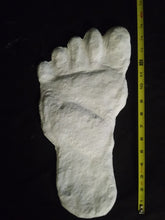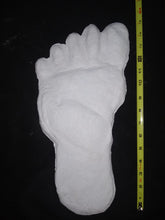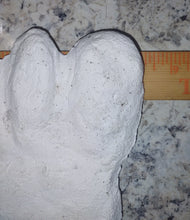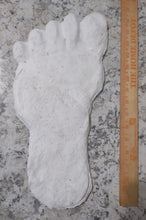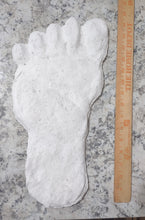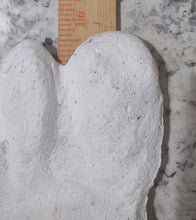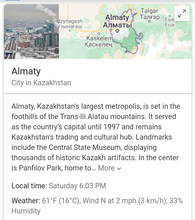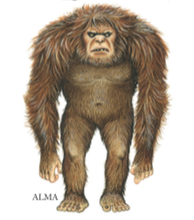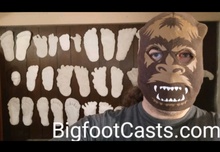
The Almas or Alma (Mongolian: Алмас/Almas, Chechen: Алмазы, Turkish: Albıs), Mongolian for "wild man", is a purported hominid cryptozoological species reputed to inhabit the Caucasus and Pamir Mountains of Central Asia, and the Altai Mountains of western Mongolia. The creature is not currently recognized or cataloged by science. Furthermore, scientists generally reject the possibility that such megafauna cryptids exist, because of the improbably large numbers necessary to maintain a breeding population.
Almas is a singular word in Mongolian; the properly formed Turkic plural would be 'almaslar'. As is typical of similar legendary creatures throughout Central Asia, Russia, Pakistan and the Caucasus, the Almas is generally considered to be more akin to "wild people" in appearance and habits than to apes (in contrast to the Yeti of the Himalayas).
Almases are typically described as human-like bipedal animals, between five and six and a half feet tall, their bodies covered with reddish-brown hair, with anthropomorphic facial features including a pronounced brow ridge, flat nose, and a weak chin.
Sightings recorded in writing go as far back as the 15th century.
In 1420, Hans Schiltberger recorded his observation of these creatures in the journal of his trip to Mongolia as a prisoner of the Mongol Khan but described them more as hairy, savage humans than animals:
"On the same mountain there are savages, who are not like other people, and they live there. They are covered all over the body with hair, except the hands and face, and run about like other wild beasts in the mountain, and also eat leaves and grass, and any thing they can find. The lord of the country sent to Edigi, a man and a woman from among these savages, that had been taken in the mountain.
This Almas footprint cast was made from an impression found in Northern parts of the Caucasus Mountains of Russia.
_______________________
Cryptozoology In search of BIGFOOT - The ALMAS ORIGIN: ALMASTY / ALMAS (comes from the Mongolian name for 'wild man'). Believed to be a cryptid that inhabits isolated areas in central Asia from the Caucasus and Pamir Mountain ranges and the Altai Mountains of Southern Mongolia. Almases are often described as robust human-like creatures of around five to six feet tall walking in a bipedal manner and covered in reddish-brown hair. The facial features have given rise to some cryptozoologists believing these to be relic populations of Neanderthals. They have a pronounced brow ridge, a flat nose, and a weak chin. It's not just folklore tales that give rise to the possibility of these being real creatures - eyewitness reports, footprint finds and tree structures have all been recorded. The story behind 'Zana' is a complex one, as identified by Professor Brian Sykes DNA study, and I don't think it should be included under this article.... but certainly there is actual evidence to support the possibility of ancient lines of hominids in the area (be they prehistoric or more modern humans (yet with unusual skull features)). The quest continues.
THIS SPECIMEN: This particular replica is based upon a find from the Northern parts of the Caucasus Mountains of Russia. It measures approx. 39 cm long and 20 cm wide at its max points. For those of you with an intellectual curiosity in this area or a passing interest, I am sure you would appreciate this specimen! And what a conversation piece!
The cast replica measures approximately 16 in Long by 8 in wide. It has twine or wire embedded in the back so that it can hang on a wall or lay flat on a shelf.












